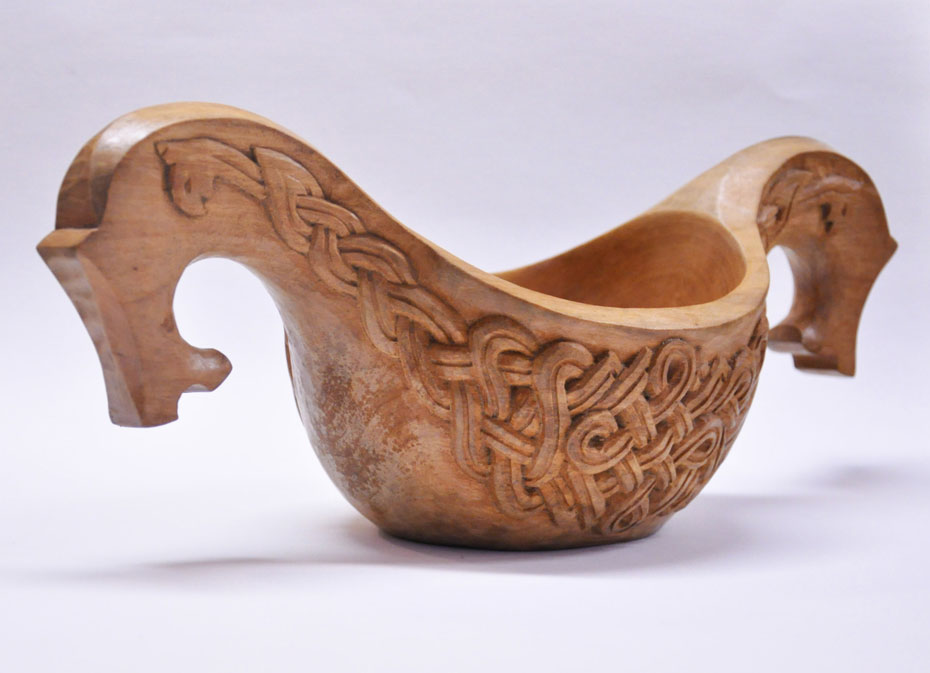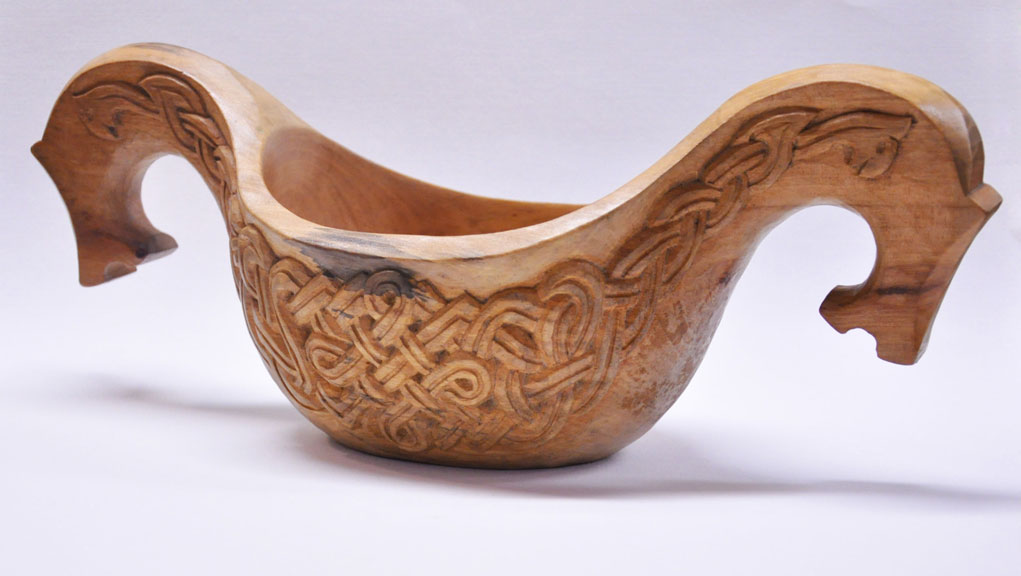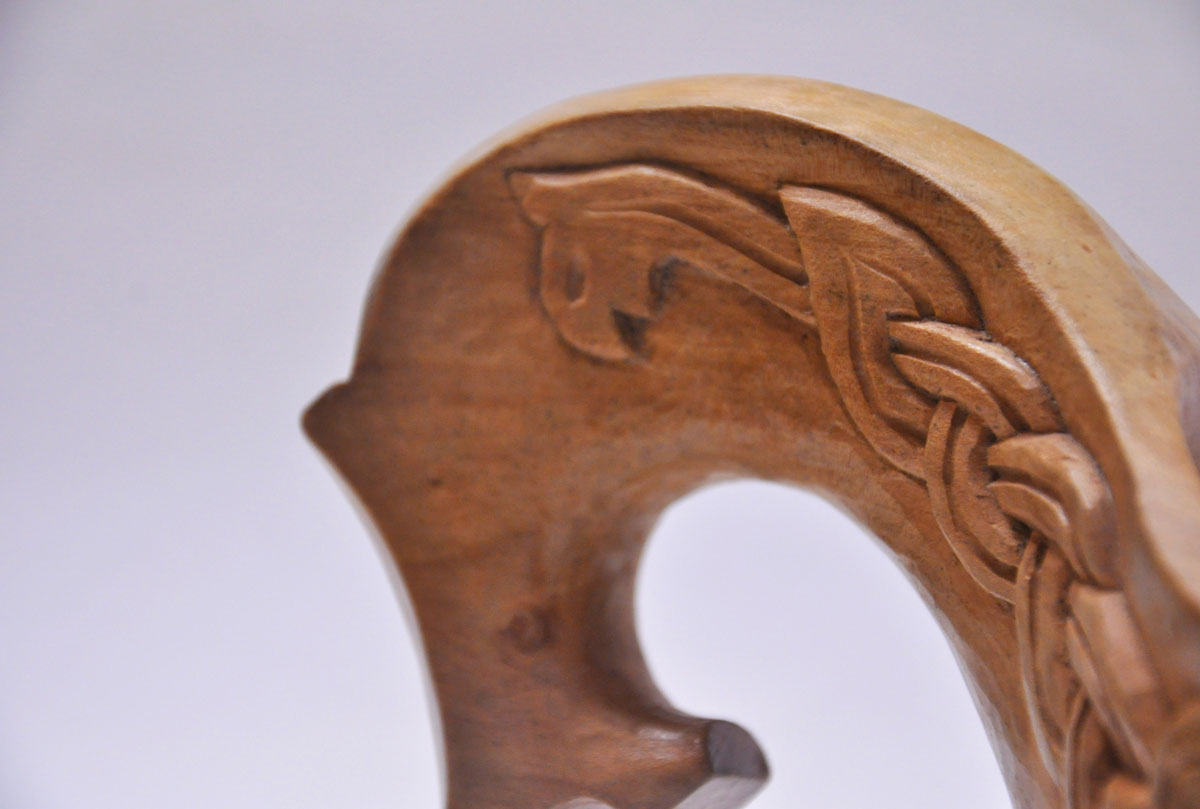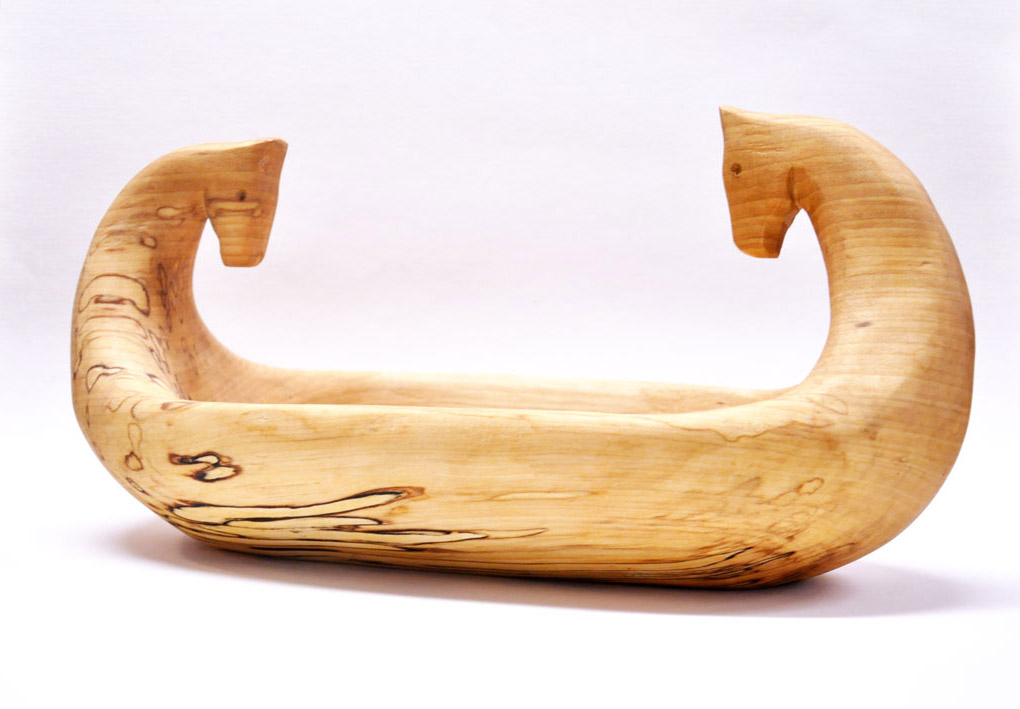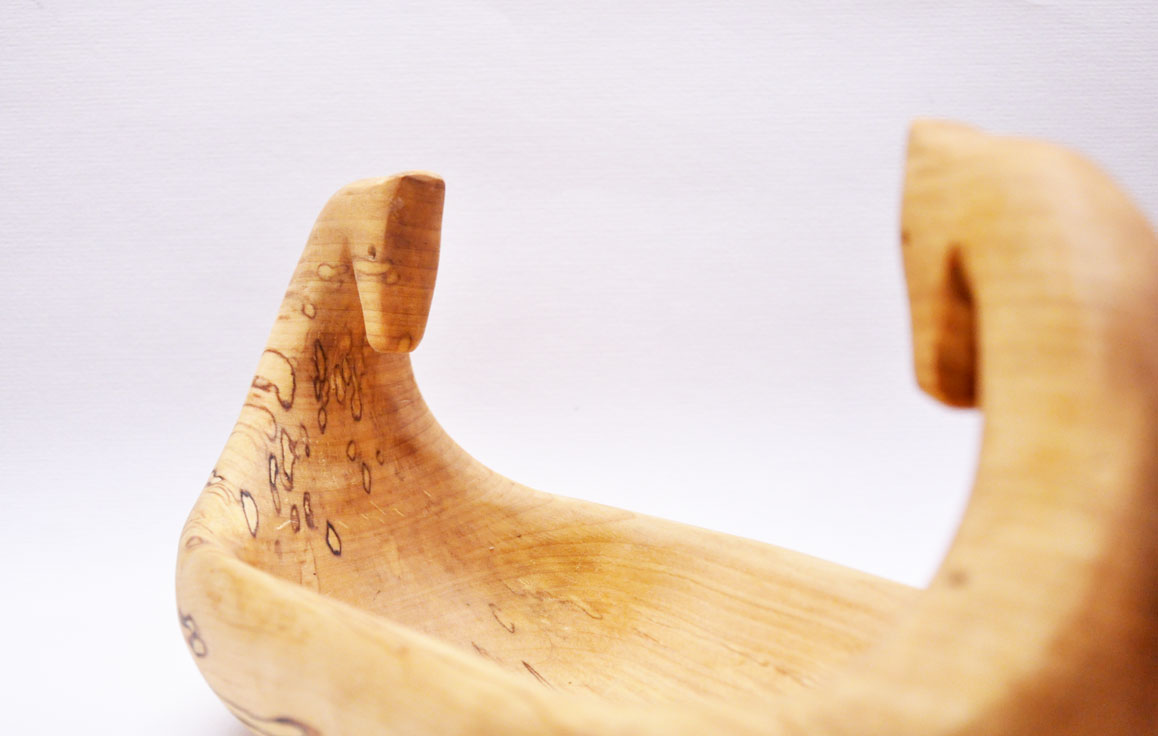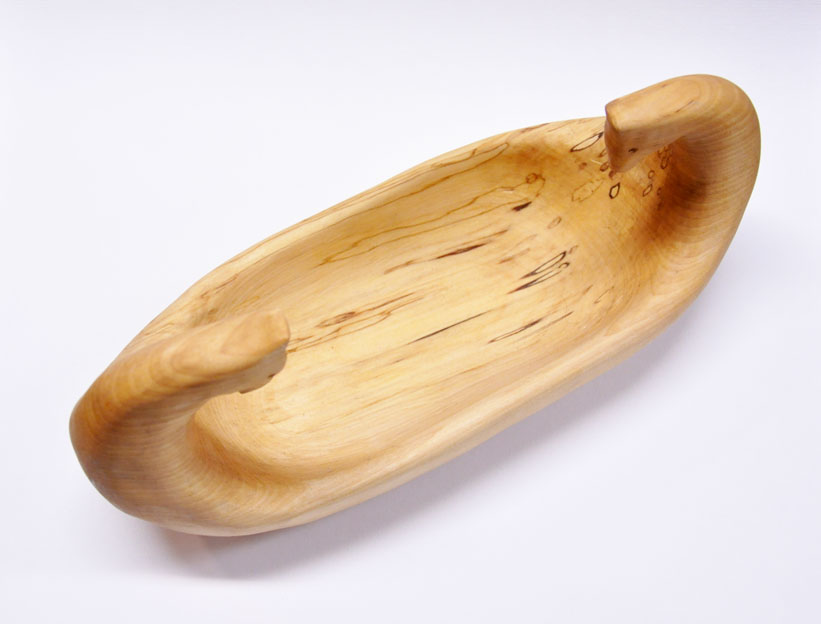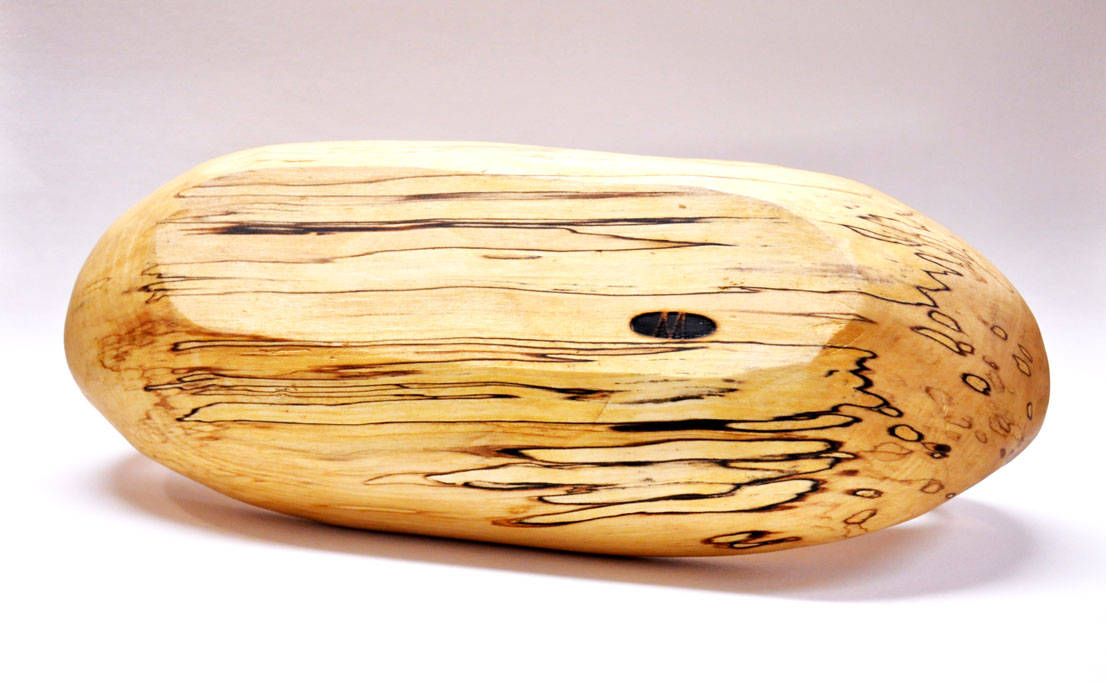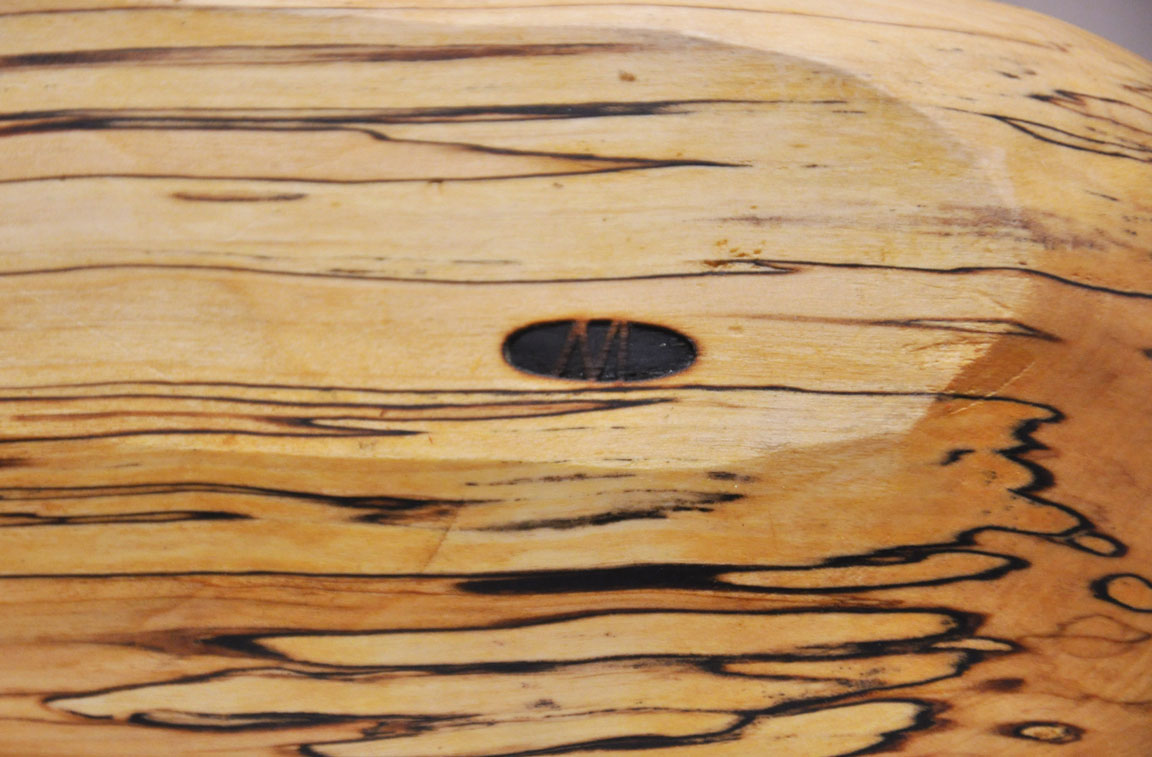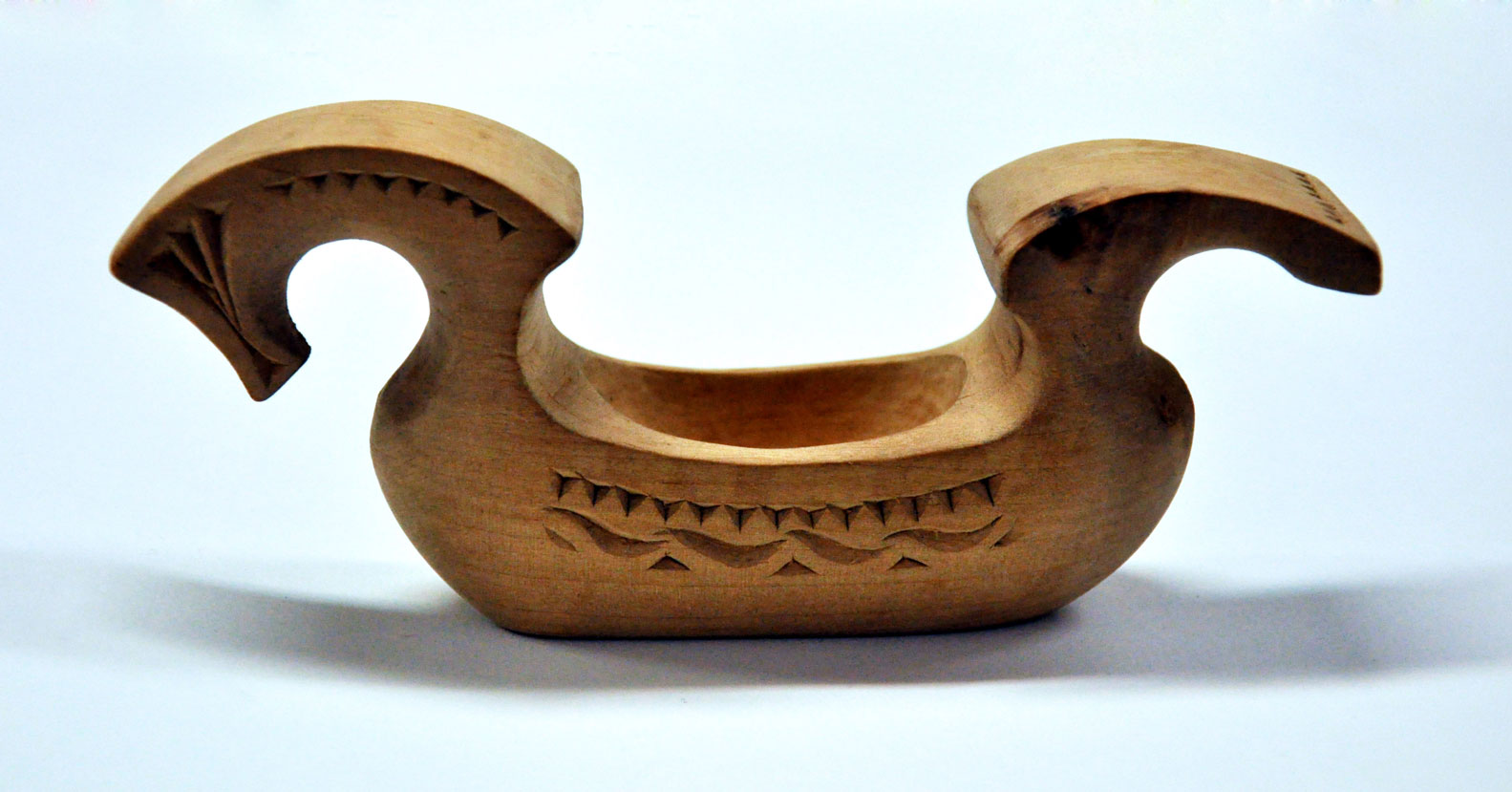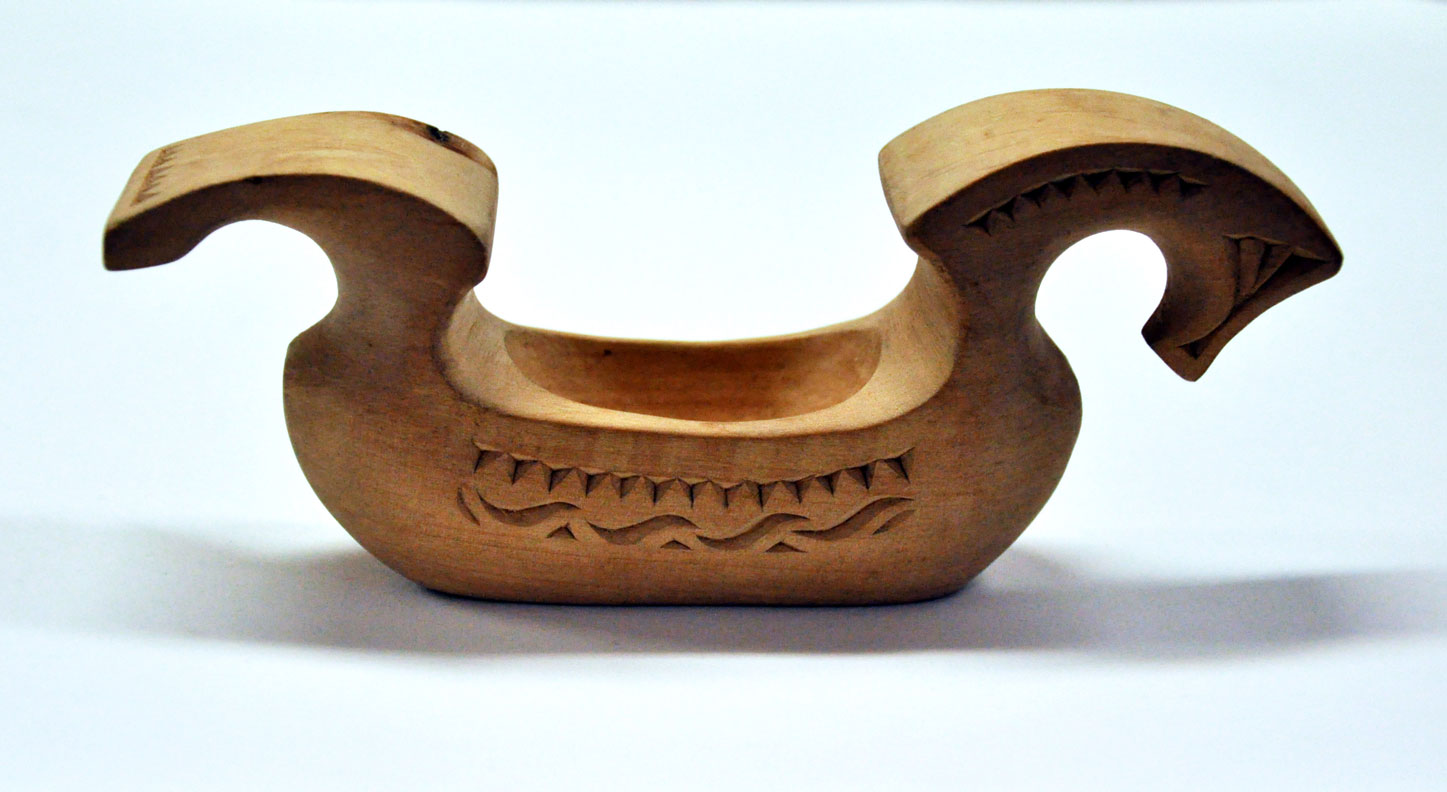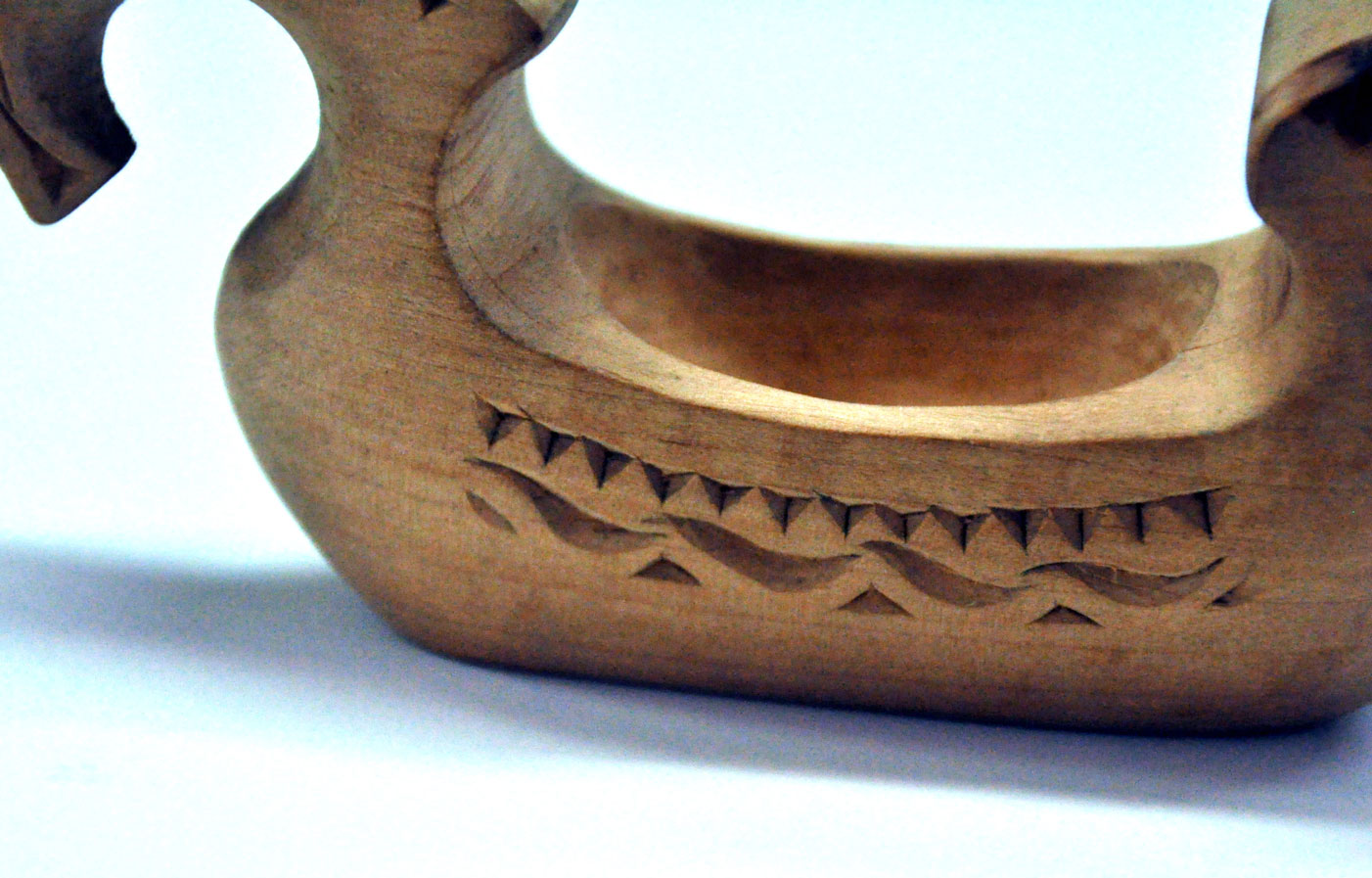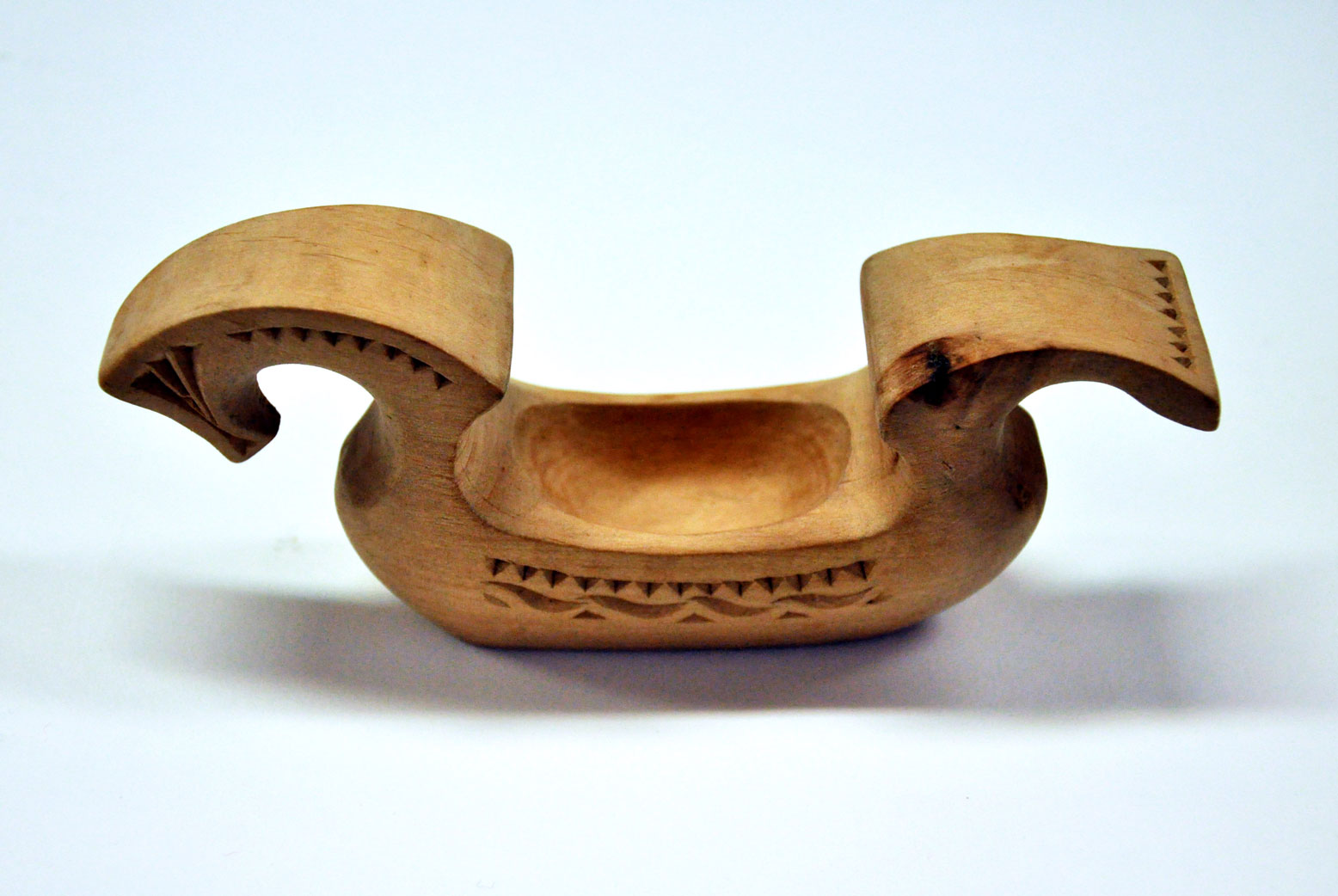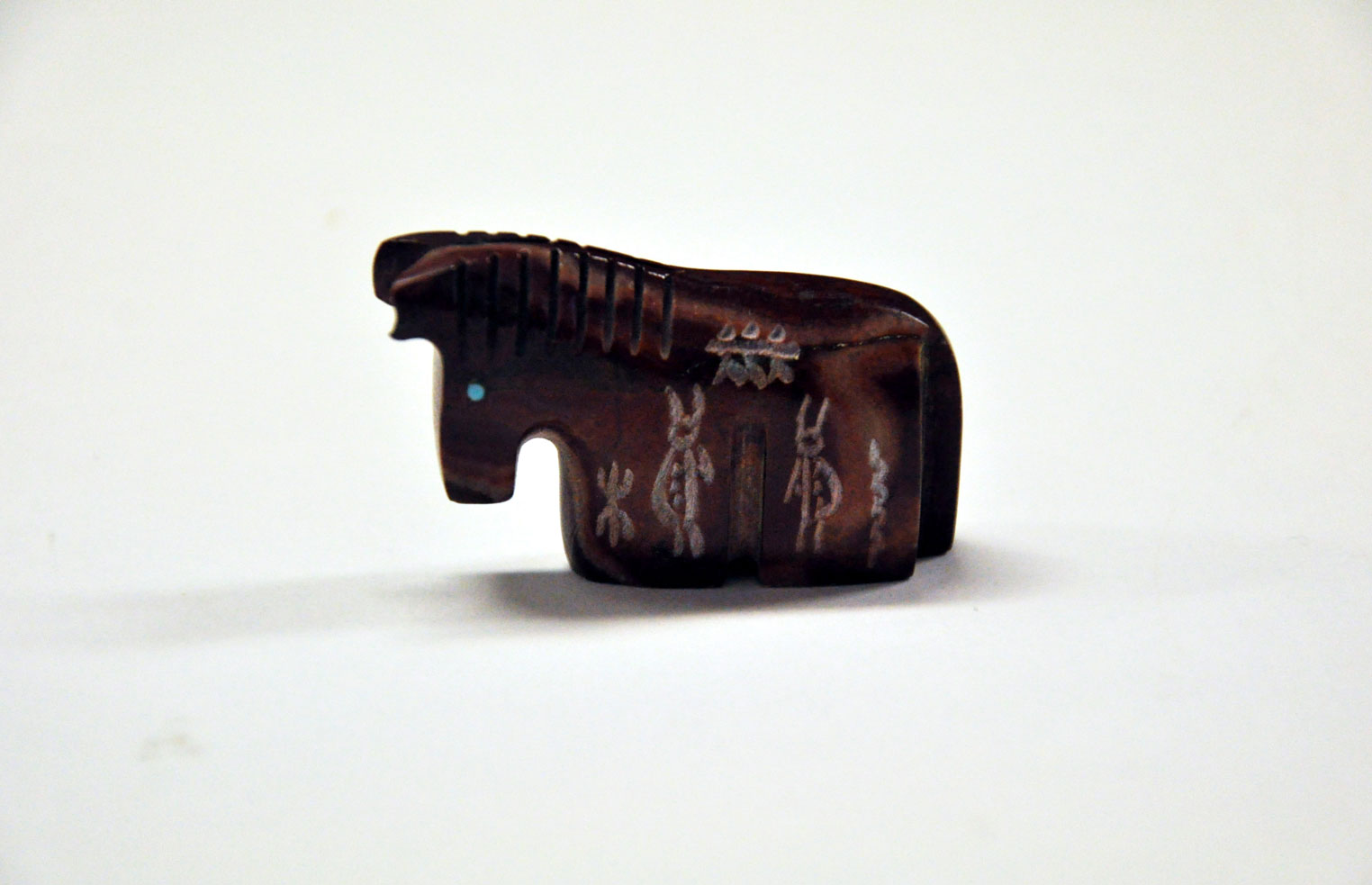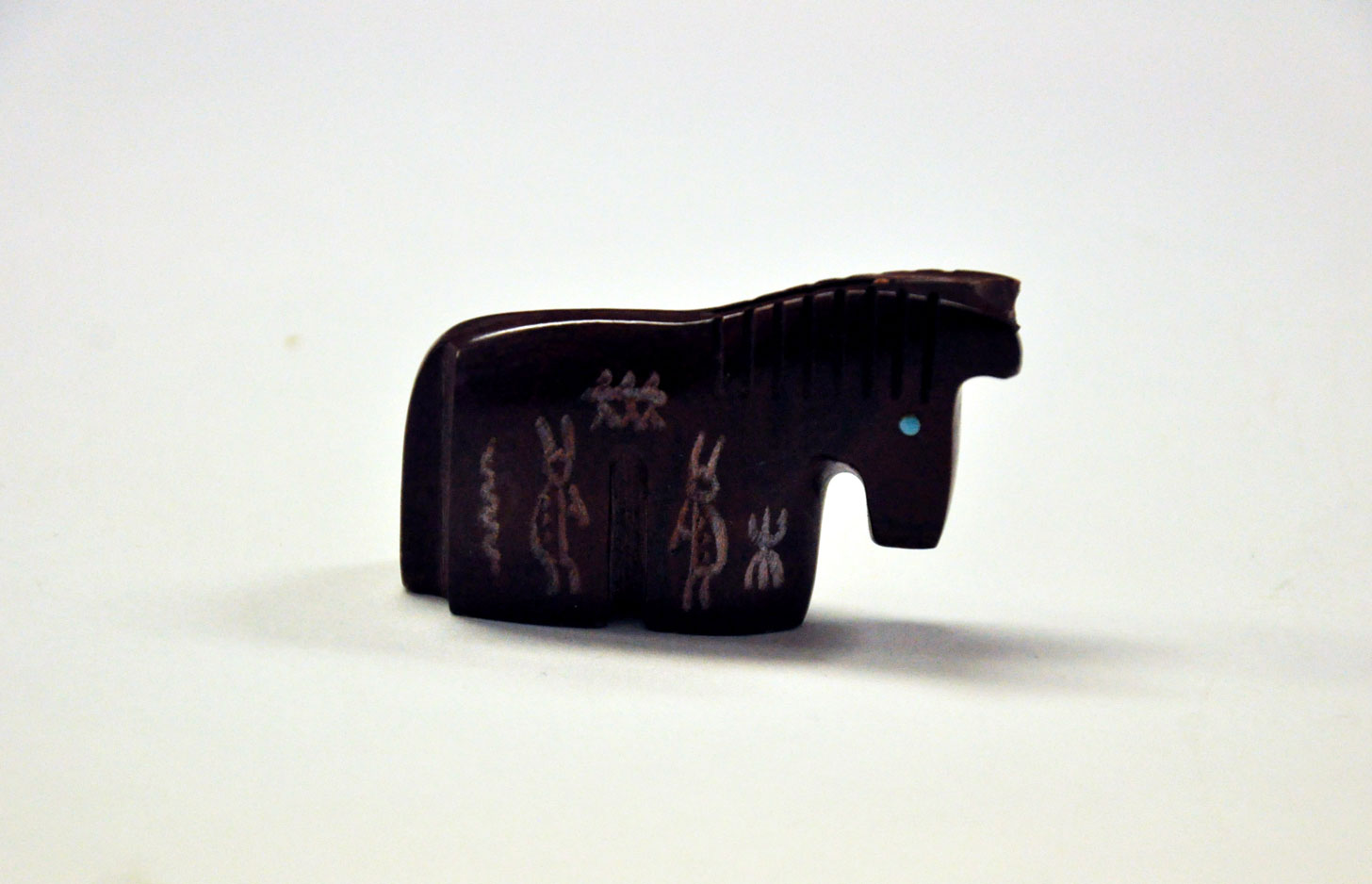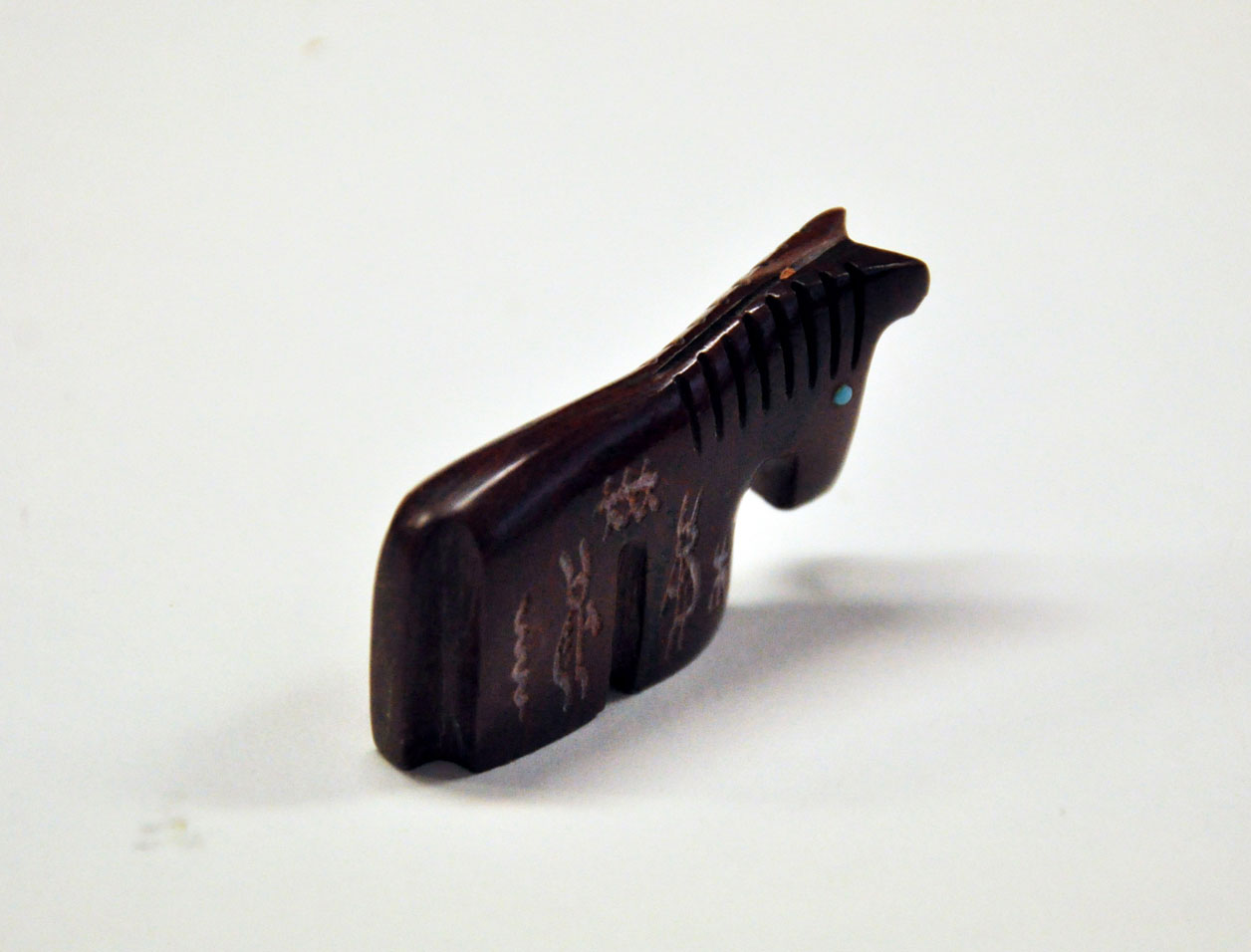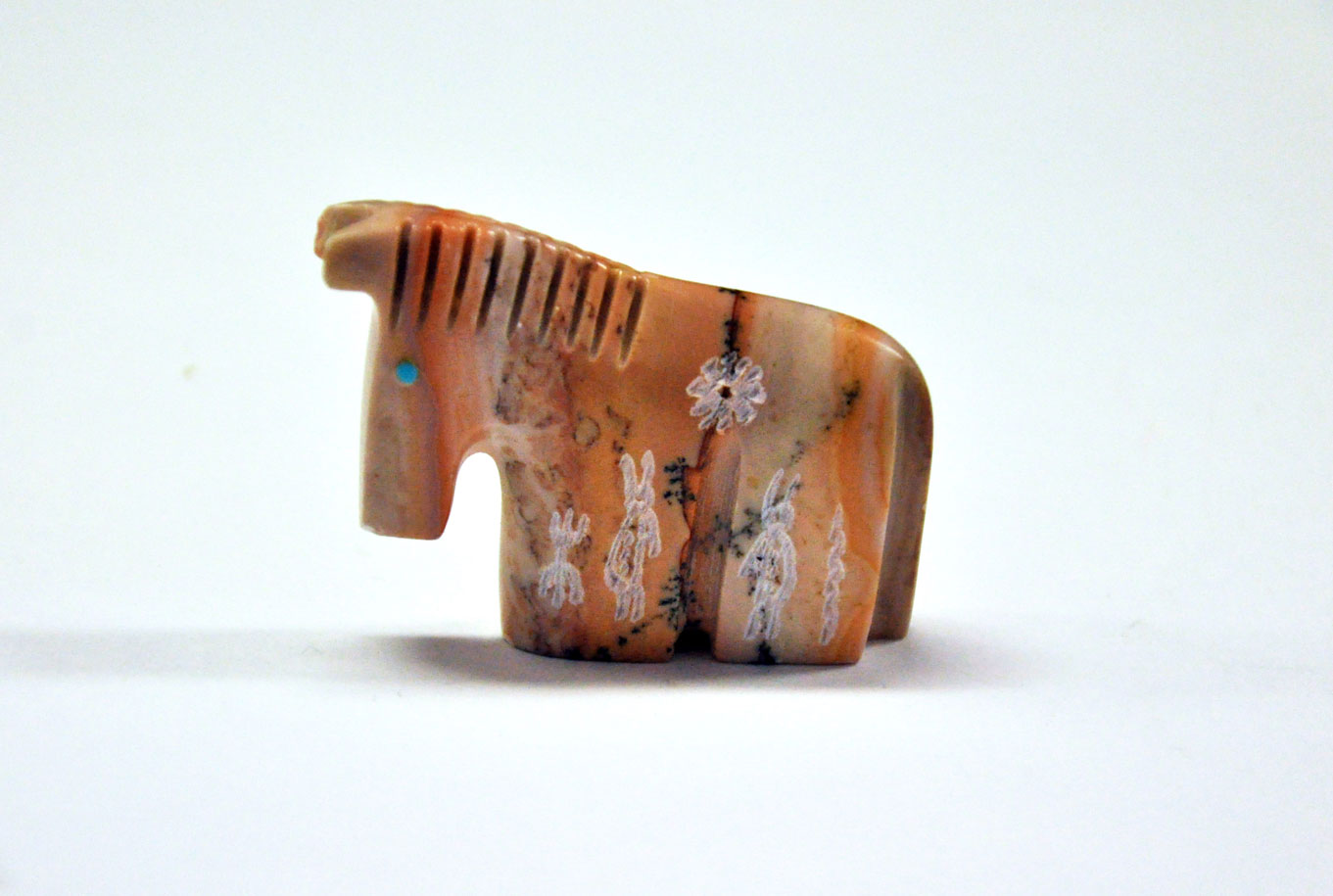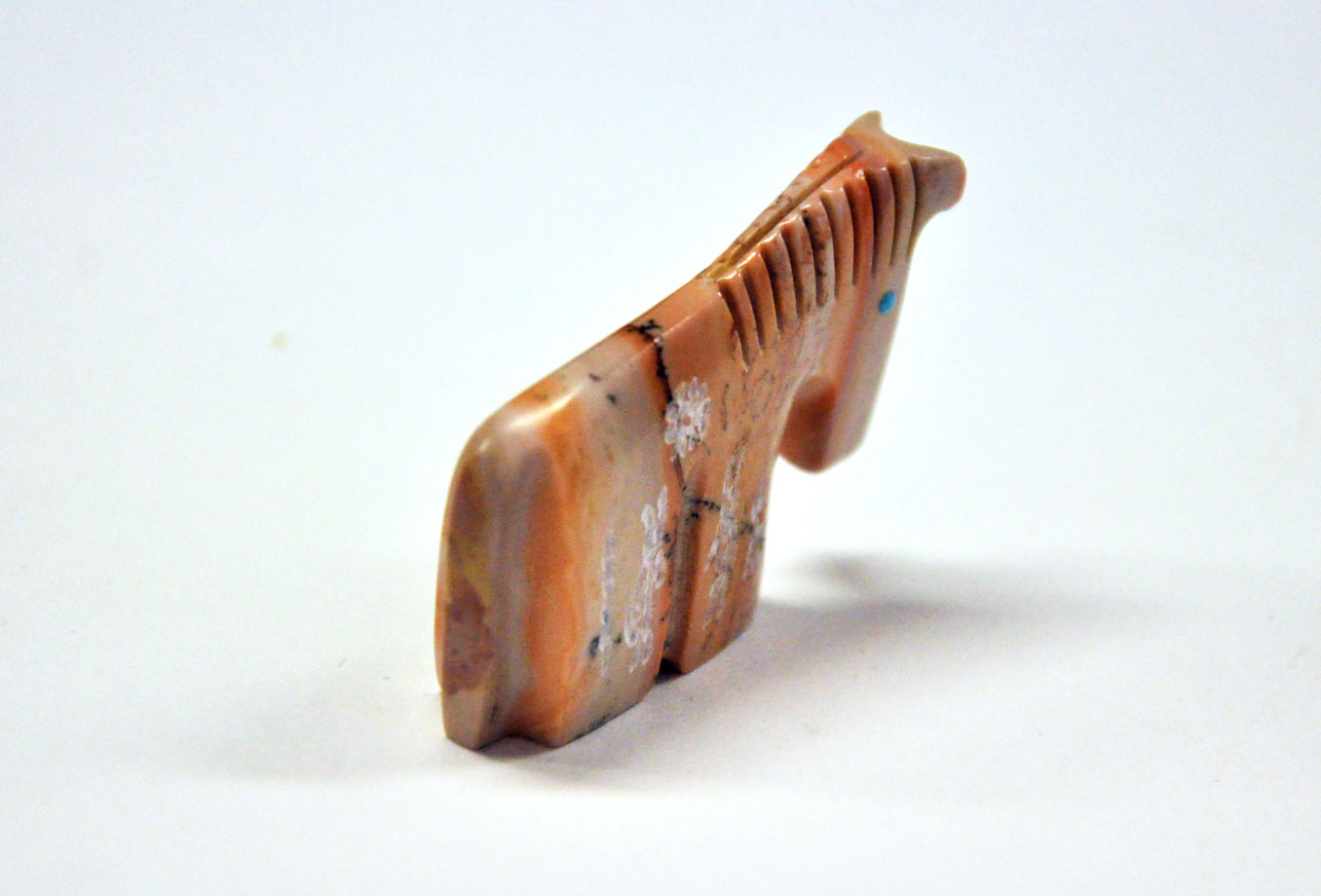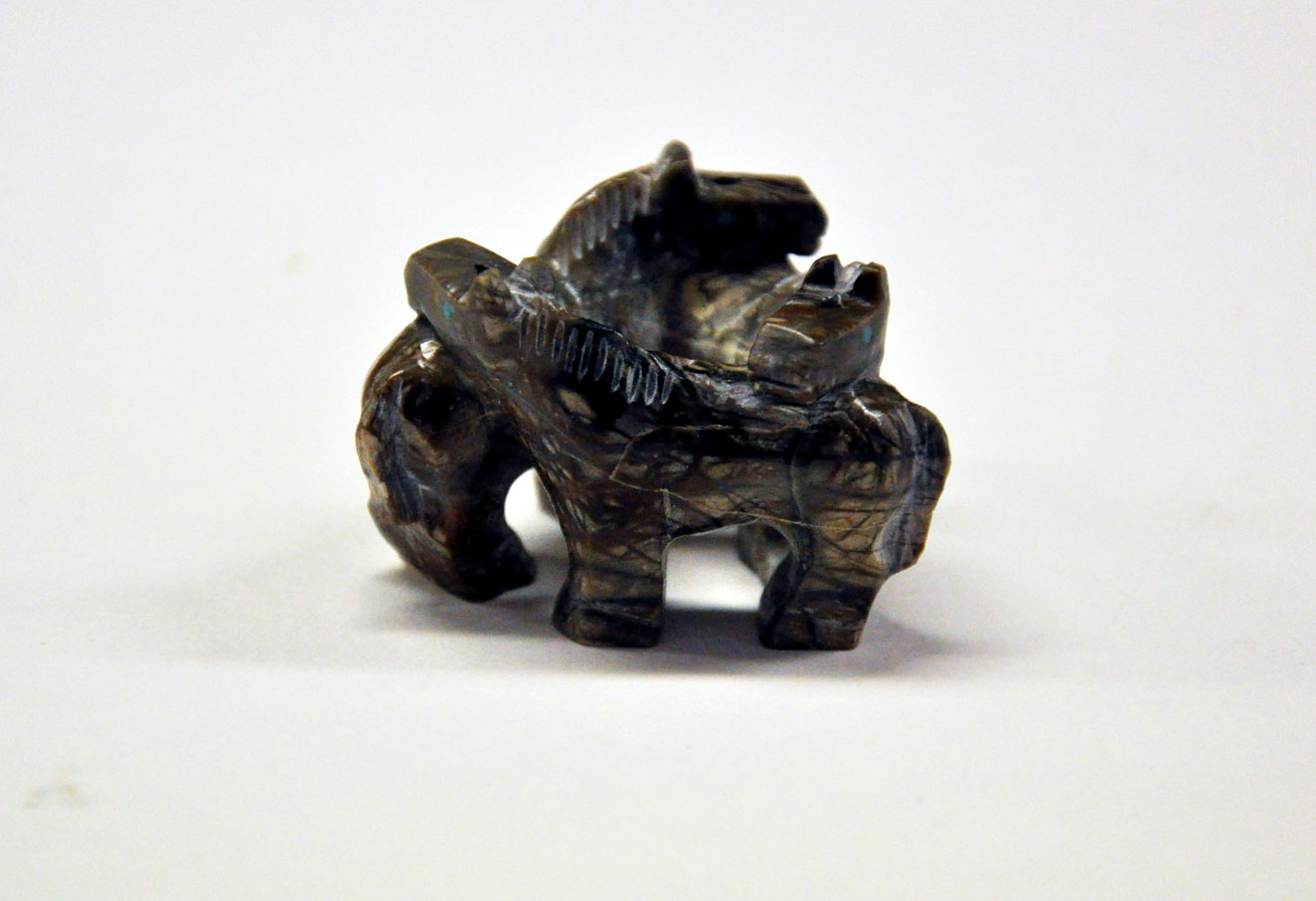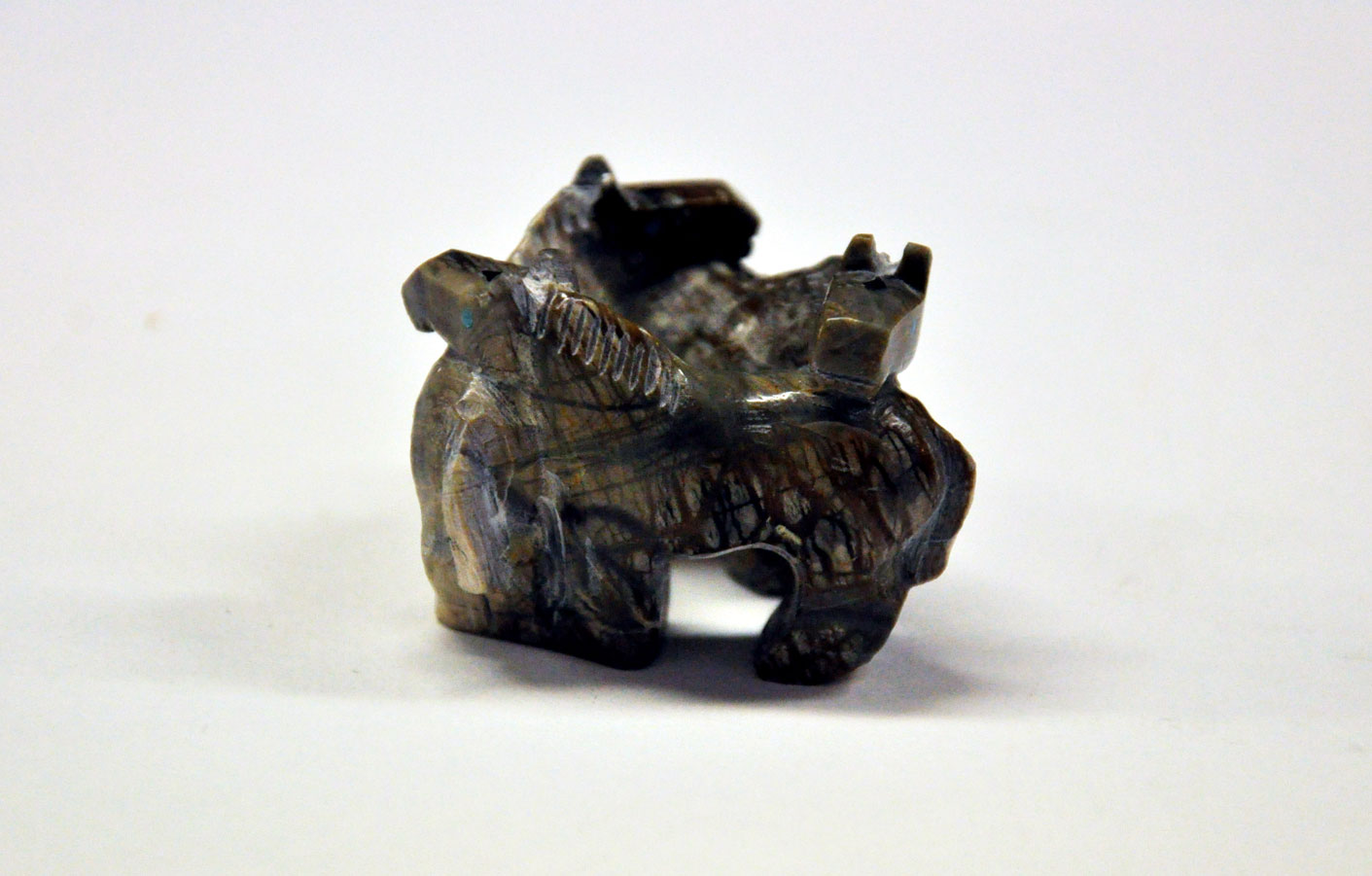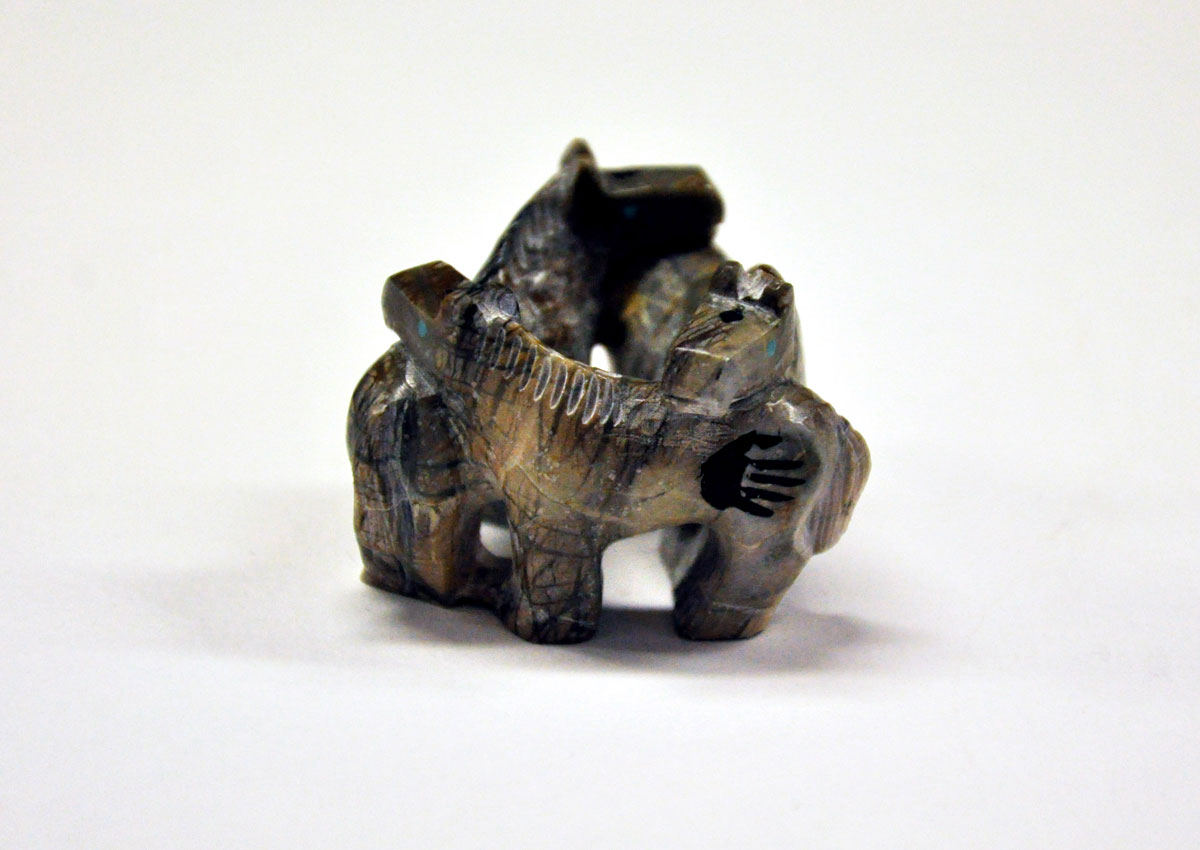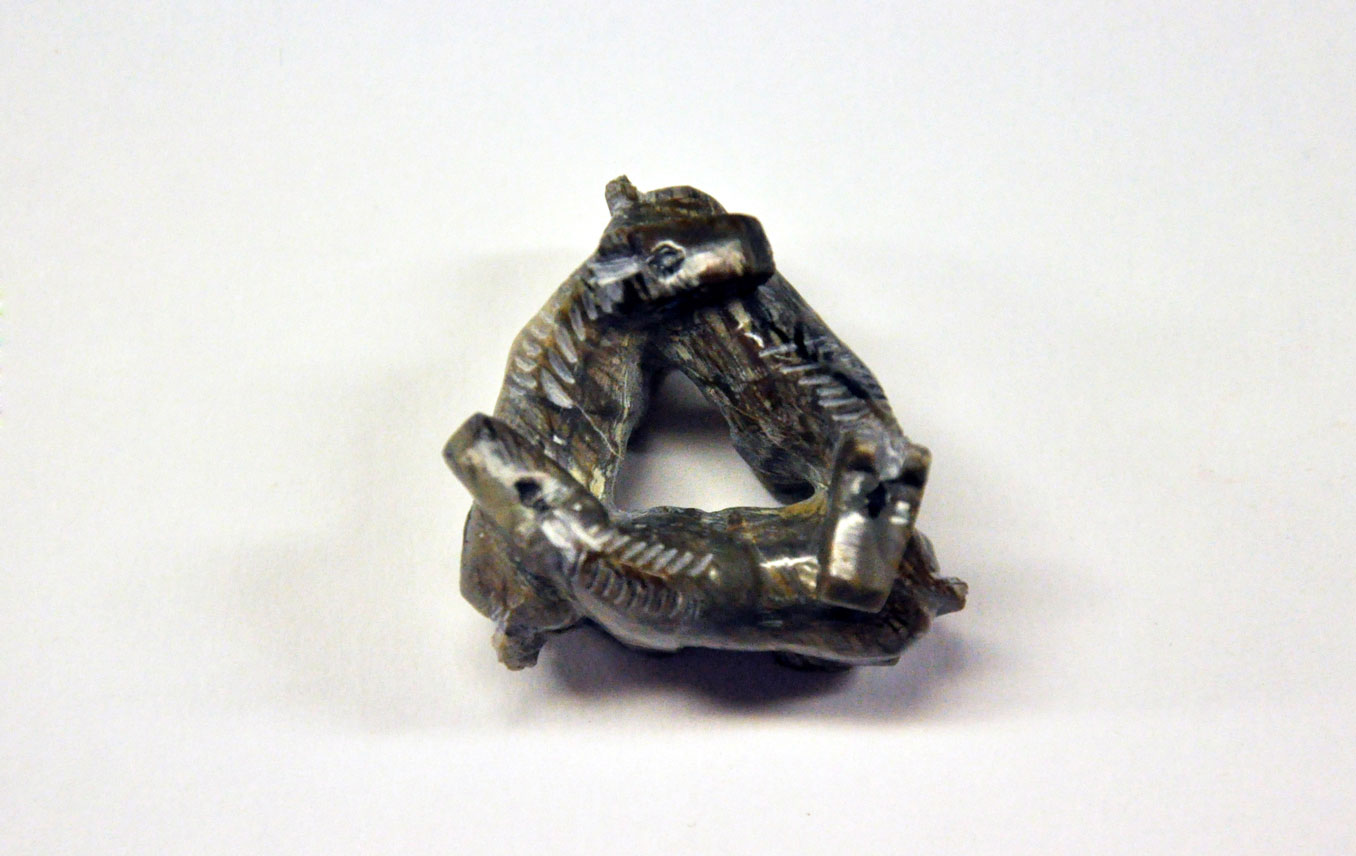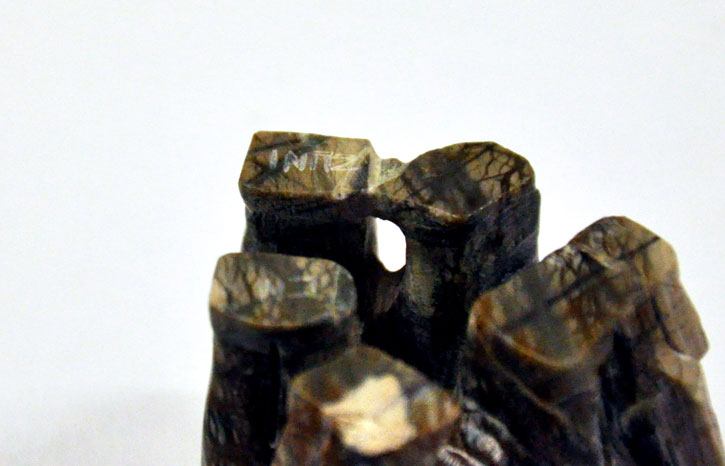The physical strength and speed of the horse made it a symbol of vitality, endurance, and fertility. It is not uncommon to see horse-shaped fetishes and talismans amongst certain Native American tribes whose roles were to transmit the animal’s inner qualities to their bearer.
In ancient times, horses were frequently subject to sacrifice and very often involved in fertility rituals. The Vikings were known for their mass sacrifices to appease the gods – usually to Odin or Týr, the god of war. During these ceremonies, the blood of the animal was collected in bowls and splattered on both altar and participants. The meat was then boiled in a cauldron and eaten by all. To acquire the horse’s vitality and satisfy the gods, one had to consume its flesh. Hippophagy – the eating of horse meat – was common in northern Europe until Pope Gregory III forbade it in 732.
Viking-style Horse Bowl
wood carving, ca. 2009, region of Arkhangelsk, Russia
Produced in Northwest Russia, this wooden drinking cup emulates the medieval Norse tradition of carving ritual bowls with horse-shape handles and intricate patterns. This type of vessel was notably used during wedding ceremonies, with the symbolic presence of the horse bringing fertility to the newlyweds.
Horse Facing Horse Vessel
wood carving, ca. 2015, Tallinn, Estonia
Horse Wave Cup
wood carving, ca.2009, Arkhangelsk, Russia
Dark Brown Horse Fetish
Tyrone Poncho
stone carving with turquoise inlay, ca. 2015, Zuni Pueblo, NM, USA
Light Brown Horse Fetish
Tyrone Poncho
stone carving with turquoise inlay, ca. 2015, Zuni Pueblo, NM, USA
Horse Family
Carol Martinez
stone carving, ca. 2015, Zuni Pueblo, NM, USA

